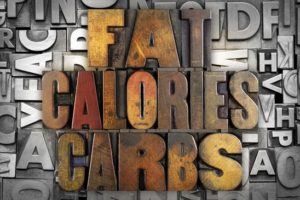
Reducing dietary fat is a major dietary goal for many consumers. With encouragement from health groups and government agencies, the public continues to choose foods and beverages naturally low in fat, as well as the fast-growing array of prepared reduced-fat and non-fat foods and beverages. The development and use of a wide variety of ingredients known as fat replacers are making many of these light products possible.
Fat, like protein and carbohydrate, is a principal and essential component of the diet. Fat is the body’s most concentrated source of energy. Some dietary fat is vital to enable the body to function properly. Fat is responsible for transporting “fat-soluble” vitamins A, D, E and K.
Dietary fats also are a source of fatty acids, including essential fatty acids which are necessary to assure good health. Essential fatty acids must be obtained from dietary sources (primarily vegetable oils) because the body cannot make them.
Fatty acids are separated by their structure as either saturated, monounsaturated or polyunsaturated. Although naturally occurring fats in food are a mixture of many different fatty acids, fats can be characterized by their origin:
Saturated fats are mainly found in foods of animal origin. These include the fats in whole milk, cream, cheese, butter, meat and poultry. Saturated fats also can be found in large amounts in some vegetable products, such as cocoa butter, coconut oil and palm oil. Saturated fats are usually solid at room temperature.
Monounsaturated fats are found primarily in plants, but also are found in animals. Olive, peanut and canola oil are common examples of fats high in monounsaturated fatty acids. Also, most margarines and hydrogenated vegetable shortenings tend to be high in monounsaturated fatty acids. Monounsaturated fats are liquid at room temperature.
Polyunsaturated fats are found mostly in plants. Sunflower, corn, soybean, cotton seed and safflower oils are vegetable fats that contain a relatively high proportion of polyunsaturated fats. Margarines with vegetable oil as the primary ingredient, and some fish, also are sources of polyunsaturated fats. Polyunsaturated fats usually are liquid at room temperature.
Fat is found at some level in most foods. The following chart from the U.S. Department of Agriculture (USDA) indicates the major sources of fat in the U.S. food supply.
| Food Group | % of Total Fat in Food Supply |
| Meat, poultry and fish | 30 |
| Grain products | 25 |
| Milk and milk products | 18 |
| Fats and Oils (mainly tablespreads and salad dressings) | 11 |
| Vegetables | 9 |
| Other | 7 |
Most consumers enjoy the taste, texture and aroma fat gives to foods. At nine calories per gram, fat is the most concentrated source of calories in the diet; protein and carbohydrates contribute approximately four calories per gram.
 Fat consumption among Americans is estimated at 34 percent of total caloric intake. This level of fat intake is considered too high by many public health organizations, which have agreed that 30 percent or less of total calories should be derived from fat, and no more than 10 percent from saturated fat.
Fat consumption among Americans is estimated at 34 percent of total caloric intake. This level of fat intake is considered too high by many public health organizations, which have agreed that 30 percent or less of total calories should be derived from fat, and no more than 10 percent from saturated fat.
The Surgeon General’s Report on Nutrition and Health states: “High intake of total dietary fat is associated with increased risk for obesity, some types of cancer, and possibly gallbladder disease. Epidemiologic, clinical, and animal studies provide strong and consistent evidence for the relationship between saturated fat intake, high blood cholesterol, and increased risk for coronary heart disease. Excessive saturated fat consumption is the major dietary contributor to total blood cholesterol levels.”
In addition to the Surgeon General, the National Academy of Sciences, American Heart Association, National Cholesterol Education Program, American Cancer Society, American Dietetic Association, National Institutes of Health, USDA and the Department of Health and Human Services are among the many health and government authorities that advocate reduction of dietary fat for most consumers. Generally, these groups recommend that even healthy consumers would benefit from reducing fat to no more than 30 percent of total calories.
For certain population subgroups (e.g., children two years old and younger and the elderly) fat reduction may not be appropriate. For others, such as persons with serum cholesterol in the “high risk” category, further dietary fat reduction may be necessary.
Considering an average consumption of 34 percent of calories from fat, decreasing intake to 30 percent may not seem a monumental task. However, for many people it is exceedingly difficult. To meet this dietary goal, people need to significantly modify their diets — e.g., choose leaner meats, skin poultry and fish, select low-fat/non-fat dairy products and dressings, and limit fried foods. Of course, consumers’ strong desire for high-fat foods makes this difficult. In fact, diet and obesity experts have found that consumers have difficulty maintaining diets once their fat consumption dips below 30 percent of total calories.
 Nevertheless, millions of consumers are trying to change their “high-fat” ways. A national survey conducted in 2000 by Booth Research Services for the Calorie Control Council revealed 188 million adult Americans (88 percent of the adult U.S. population) consume low- or reduced-fat foods and beverages. Another Council survey shows that two-thirds of adults believe there is a need for food ingredients which can replace the fat in food products. According to Prepared Foods, more than 2,000 new low- or reduced-fat products have been introduced since 1997.
Nevertheless, millions of consumers are trying to change their “high-fat” ways. A national survey conducted in 2000 by Booth Research Services for the Calorie Control Council revealed 188 million adult Americans (88 percent of the adult U.S. population) consume low- or reduced-fat foods and beverages. Another Council survey shows that two-thirds of adults believe there is a need for food ingredients which can replace the fat in food products. According to Prepared Foods, more than 2,000 new low- or reduced-fat products have been introduced since 1997.
The food industry has responded to consumer demand by offering an ever-increasing variety of low-fat eating choices. These rich, creamy reduced-fat foods are the result of various new, and existing, food technologies used to replace some or most of the fat without sacrificing the taste and texture consumers desire. Some of the more traditional examples include: replacing whole milk with skim milk in “ice creams,” using leaner meats in frozen entrees, baking snack foods instead of frying and replacing the fat in some products with water or air.
Many good-tasting, low-fat foods are available today thanks to the growing use of one or more low-calorie fat replacers. Most fat replacers currently in use are reformulations of previously used food ingredients. Additionally, the food industry has formulated a variety of new fat replacer ingredients by using innovative technologies.
 The type of fat replacer(s) used in a product depends largely on which of the complex and diverse properties of fat are being duplicated. In addition to flavor, palatability and creaminess, fats provide an essential lubricating action. In fried foods, fats and oils transmit heat rapidly and uniformly and provide crisping. Thus, the particular desired functions of fat needed to produce an acceptable product — flavor/texture, lubrication, volume/bulk, or heat transfer — determine which ingredient(s) and processing techniques are employed.
The type of fat replacer(s) used in a product depends largely on which of the complex and diverse properties of fat are being duplicated. In addition to flavor, palatability and creaminess, fats provide an essential lubricating action. In fried foods, fats and oils transmit heat rapidly and uniformly and provide crisping. Thus, the particular desired functions of fat needed to produce an acceptable product — flavor/texture, lubrication, volume/bulk, or heat transfer — determine which ingredient(s) and processing techniques are employed.
The ideal fat replacer(s) recreates all the attributes of fat, while also significantly reducing fat and calorie content. The challenge for food processors is to identify the fat replacer(s) that works best for a given product.
Fat replacement may require several ingredients to replace the functionality of fat. A “systems approach” is, therefore, sometimes employed. In the systems approach, a variety of synergistic components are used to achieve the functional and sensory characteristics of the full-fat product. Combinations of ingredients are used to compensate for specific functions of the fat being replaced. These combinations may include proteins, starches, dextrins, maltodextrins, fiber, emulsifiers and flavoring agents. Some fat replacers are now available that are themselves a combination or blend of ingredients (for example, one ingredient currently in use is a combination of whey, emulsifiers, modified food starch, fiber and gum).
The public will benefit most from a wide variety of ingredients used as fat replacers in order to capitalize on the unique qualities of each in the most appropriate product applications. The result is a greater variety of rich, creamy, good-tasting low-fat foods and beverages for consumers to enjoy.
The fat replacers developed to date generally fall into one of three categories:
Many of the low-fat products introduced in recent years contain carbohydrate-based fat replacers (e.g., cellulose, maltodextrins, gums, starches, fiber and polydextrose). Carbohydrates have been used safely for many years as thickeners and stabilizers. These ingredients are also effective fat replacers in many formulated foods, including heat applications. They are not suitable for frying foods.
Protein-based fat replacers have tremendous potential for use in a variety of products, especially frozen and refrigerated products. Although protein-based fat replacers are not suitable for frying foods, they can be used in many heat applications (e.g., cream soups, pasteurized products, baked goods).
Scientists have been able to chemically alter fatty acids to provide fewer or no calories, makingfat-based fat replacers possible. Some fat-based fat replacers actually pass through the body virtually unabsorbed (e.g., olestra). These ingredients have the advantage of heat stability and offer excellent versatility. Some may be used in frying; others as cocoa butter substitutes.
According to a 1998 survey conducted for the Calorie Control Council, 54 percent of consumers find “reduced in both fat and calories” an appealing descriptor when selecting light products. Food labels indicating a reduction in fat are, therefore, important to both the consumer and the food industry.
U.S. food labeling regulations implemented in 1994 provide for a number of claims indicating a reduction in fat, calories or both.
Fat Claims

For meat, poultry, seafood and game meats:
Calorie Claims
Calorie and Fat Claims
Light: 1/3 fewer calories or 1/2 the fat of the reference food. (If the food derives 50% or more of its calories from fat, the fat must be reduced by 50%.)
The age of reduced-fat and fat-free options is upon us. Fat replacers have opened the door for a new generation of reduced-fat foods that have the taste and texture of the high-fat foods consumers enjoy, but without unnecessary calories, cholesterol or fat.
As the American Dietetic Association has stated, “Fat replacements provide an opportunity for individuals to reduce intake of high-fat foods and enjoy reduced-fat formulations of familiar foods while preserving basic food selection patterns…. Indeed, many of the fat replacements in use today can be incorporated into foods that reflect the changing tastes of Americans. Traditional and new ingredients and technologies provide flavorful, satisfying foods, such as salad and cooking oils, cheeses, ice creams, bakery products, and salty snacks and crackers, that are reduced in fat or contain no fat.”
When limiting dietary fat, consumers still need to satisfy their basic nutritional needs. No product is a panacea. Additional reduced-fat products will not replace a person’s need for moderation and good nutrition. However, they do provide palatable alternatives which can make the difficult task of compliance with a reduced-fat and/or reduced-calorie diet easier. Thus, when incorporated into an overall balanced, nutritious diet, reduced-fat foods and beverages can play an important role in helping consumers reach and maintain their goal of reducing consumption of dietary fat, cholesterol and calories.